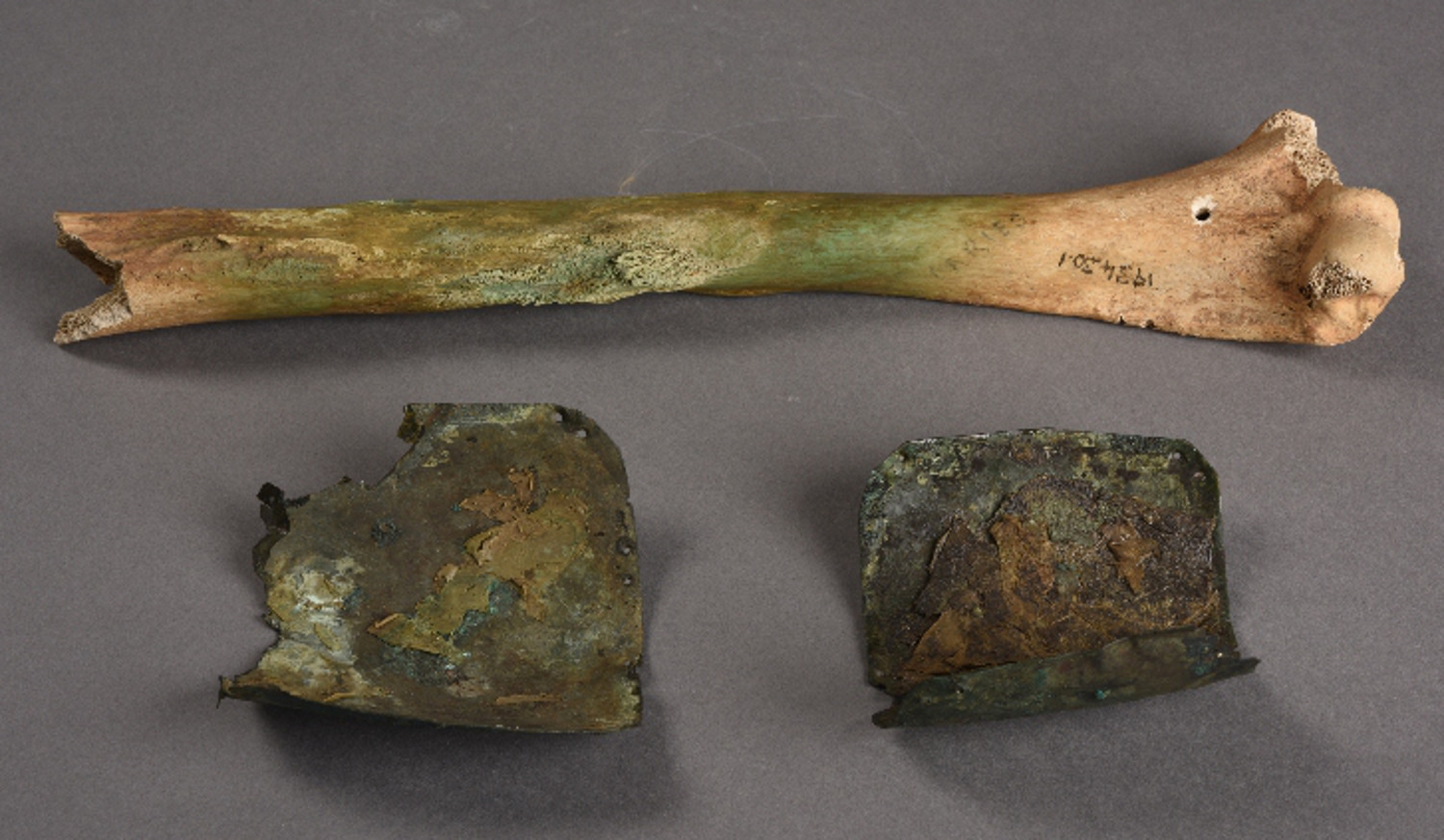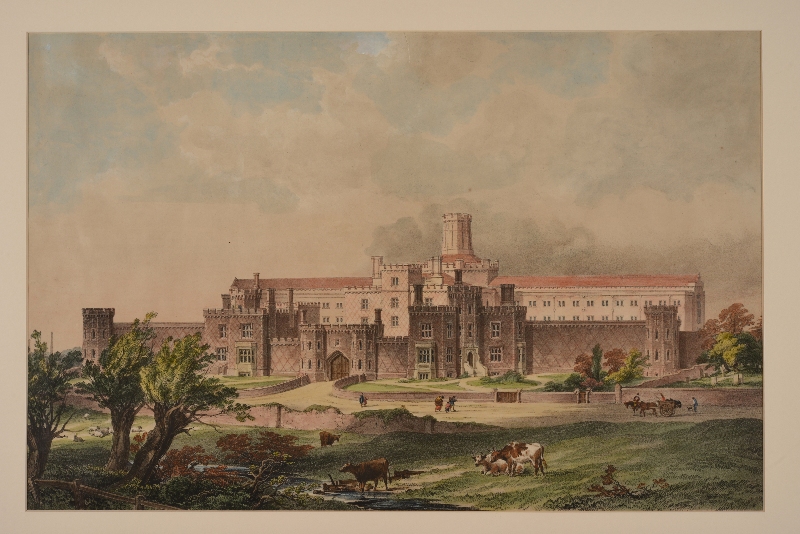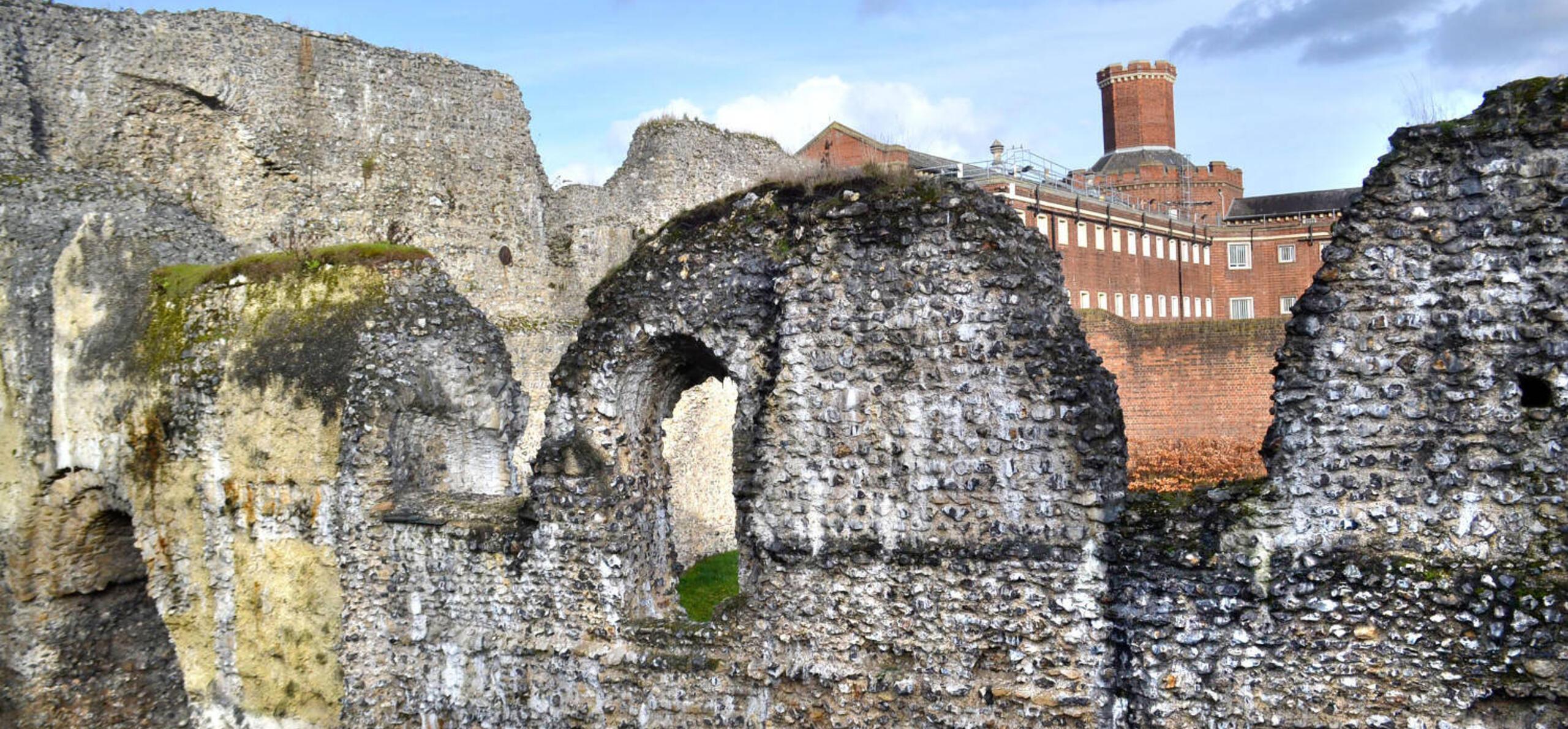Reading Gaol is a well-known part of the town, but not everyone realises that it was built over the abbey site. The first prison here was built in 1785 over the former abbey infirmary. The remains of the eastern end of the abbey church were also destroyed to make way for the new prison. The prison was re-built in 1844 and this is what still stands today. Reading prison was closed in 2013 when it was a 'Young Offenders Institute'.
Digging Deeper - Abbey Infirmary
Reading Gaol sits on the eastern end of the Abbey Quarter. It was built over the abbey hospital. A key part of abbey life was seclusion from the outside world. This meant that the monks who lived had everything they needed within the abbey precinct - including healthcare.
Monks devoted their lives to God and to learning. This meant they were often at the forefront of medical knowledge at the time, enabling them to look after sick or elderly monks. The infirmary would have been completely self-contained with its own chapel and kitchens. This prevented the spread of illness around the abbey. The usually strict rules for monks were relaxed in the infirmary to allow them to re-cover. This included eating better so monks could re-gain strength.
The abbey also ran a leper hospital. Leprosy was a common medieval disease that involved nasty rashes and wasting muscles. This hospital was built far from the town centre, on what is now called 'Cemetery Junction' in east Reading. When a pub was built here in the 19th century excavations at the Jack of Both Side pub found numerous skeletons which were probably in the hospital cemetery. One skeleton has copper plating around the arm - this could have held an ivy-leaf dressing in place which was a treatment for leprosy.

Human arm bone with copper binding plates. From medieval Jack-of-Both-Sides cemetery, Reading (museum object no. 1934.30.1)
Digging Deeper - Oscar Wilde
Reading Gaol is perhaps best known for the infamous incarceration of Oscar Wilde who subsequently wrote the poem 'the Ballad of Reading Gaol'. He served a two-year sentence in Reading from 1895-7 for having a relationship with a man which was illegal at this time. Reading Gaol followed the 'separate system' which kept prisoners entirely separate from each other. In addition to this psychological challenge, prisoners were subjected to hard labour which was made up of gruelling, pointless tasks.
Wilde knew Reading before his imprisonment and visited socially. You can find out more on our blog. There is also more on the Berkshire Record Office website

The New County Gaol in 1844 (Reading Museum)





